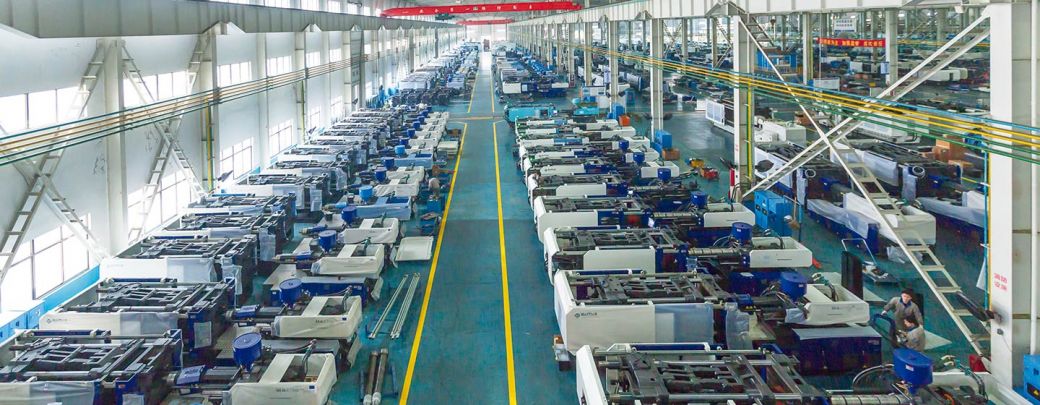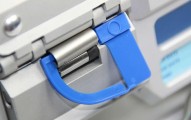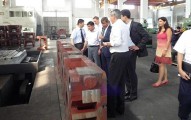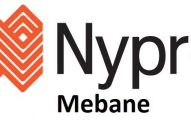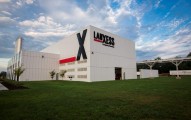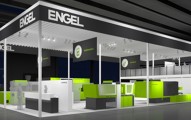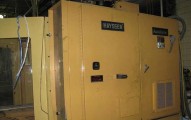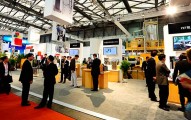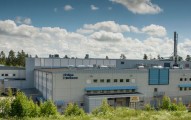Haitian Aims to Grow in Europe
Increased manufacturing capacity and new high precision machine introductions show China’s Haitian intends to be a major player in Europe’s injection machinery market.
Chinese injection machinery maker Haitian used its open house event at its Zhafir Plastics Machinery plant at Ebermannsdorf in Germany to underline its commitment to the European market, announcing plans to further expand local manufacturing.
Haitian International board member and chief strategy officer Professor Helmar Franz said board approval had been given to acquire a 16,000 sq.m green field site alongside the current Zhafir manufacturing unit. Planning will begin this year for construction of a new plant covering around 8,000 sq.m. He said the decision represents a “double-digit” euro investment.
The announcement comes after a record year for Haitian International in terms of both sales and profit, said Franz. The company’s global turnover for 2013 was up 14% to RMB7.2bn (around E854m) and profit after taxes was up 22% to RMB1.21bn (E142m). Export sales amounted to RMB2.11bn (E250m). In financial terms, the injection machine maker sits in second place in terms of global scale behind Austria’s Engel. None can match its unit sales figure of 27,000 machines.
The Zhafir operation was established in Germany in 2006 to build high-end all-electric moulding machines. Haitian added the current assembly hall, which has a capacity for around 500 units a year, in 2009. Zhafir Plastic Machinery is a manufacturing enterprise – all sales are handled through Nuremburg-based Haitian Europe and its network of sales agents. Representation via local sales agents is a key element in the Chinese machine maker’s business strategy, according to Franz. “The different regions of the world all have different perspectives,” he says. “We have to know our customers everywhere in the world, understand their problems, and know what we can do to solve them. This is why we have local agents.” Zhafir’s key product is the all-electric Venus machine.
Available from 40 to 550 tonnes locking force, Haitian supplied 1,000 units from its production plants in Germany and China during 2013 and has delivered more than 4,000 to date. The Venus machines that leave the Ebermannsdorf factory are assembled from ‘kits’ supplied from China with the incorporation of some locally-sourced parts such as the Austrian Sigmatek control system and German KEB invertors.
Servo motors are manufactured in China by Haitian subsidiary Hilectro. The introduction of servo-hydraulic machine technology means all-electric equipment no longer offers the huge energy saving over hydraulics but that has not dampened interest, Franz says, as customers become more aware of the even bigger improvement in precision and repeatability. “We see further growth in electric machine sales this year,” he says.
The latest addition to the Zhafir line – the Zeres Series – aims to further simplify the move to electric machine technology by providing a fully integrated core-pulling capability. This is a near essential requirement in the technical moulding sector.
“The Zeres is the machine to encourage customers that would not think of all-electric machines to come to them,” Franz says. The Zeres design uses the same clamp, injection and plasticising system as the Venus models but integrates a high efficiency variable displacement hydraulic pump which maintains injection nozzle pressure and powers the multi-stage ejectors and core functions. Compared to the external constant speed hydraulic core pulling package offered as an option on Venus machines, the integrated Zeres solution provides better energy efficiency and faster core movement. It also allows nozzle pressure to be adjusted (nozzle pressure is fi xed on the Venus machine).
From a cost perspective, Franz said a Zeres machine is likely to come in at around 10-15% less than a similar sized Venus fitted with an auxiliary hydraulic pack. A 230 tonne Zeres machine was demonstrated at the open house event producing an 83g automotive ashtray in a 30% glass reinforced PA6 on a two-cavity hot runner mould. The machine was running on a 26s cycle at an energy consumption of 0.75 kWh/kg.
Zhafir also showed a prototype variant of its high performance Mercury design, currently given the working name of Mercury X. The Mercury design features a spacious clamp that replaces tiebars with two side-plates carrying linear guides. Intended for the most demanding applications, it uses a crankdriven high speed clamp and a two-stage screw and plunger injection unit that provides very high shot melt stability and injection dynamics.
The Mercury X design retains the spacious tiebar-less frame but uses a more conventional five-point toggle and reciprocating screw plasticising system (both taken from the Venus models). It also uses the same Hilectro servo motors used on the Venus machines in place of the Swiss Servax units fitted to Mercury models. Mercury machines were designed for applications such as IML packaging, where high performance is required together with good access for side entry automation.
While the Mercury X machine will not match the speed and precision of the original, Zhafir product manager Constantin Missel says it could appeal to customers such as connector producers that often run bulky moulds requiring relatively low clamp forces. He estimates, in such applications, the customer could opt for a 100 tonne Mercury X model in place of a 150 tonne Venus design. Other machines on show at the open house event included Mars three-platen and Jupiter two-platen models.Energy saving servo hydraulic drive is standard on all models in both ranges. Franz said Haitian has now sold more than 100,000 of the Mars machines, which were fi rst introduced in 2006 and cover the range from 60 to 4,000 tonnes.
The company demonstrated a 120 tonne version producing a 135g PP storage box on a single cavity hot runner mould during the open house. Running on a 24s cycle, the energy consumption was 0.44 kWh/kg. Franz also announced an extension of the two-platen Jupiter series to include a new 450 tonne version at the lower end (he said the company has just delivered its largest ever Jupiter model, a 6,600 tonne machine). The machine running at Ebermannsdorf was a 550 tonne model producing a 180g PP steering wheel cover in a two-cavity hot runner mould on a 40s cycle. Energy consumption was 0.51 kWh/kg.

